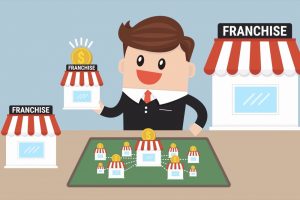Top 10 Reasons A Franchise Business Could Fail
A Franchise business can be a wonderful opportunity to enjoy fantastic profits and growth. However, you must be aware of specific situations that could lower your likelihood of success and ensure that you avoid them. Franchise businesses can fail due to a variety of reasons, just like any other business. Some of the most common reasons include:
- Lack of Capital: Franchises often require significant upfront investment, including franchise fees, startup costs, and royalty payments. If a franchisee underestimates these costs or overestimates revenue, they can quickly find themselves in financial trouble.
- Inadequate Support from Franchisor: Some franchisors do not provide enough support in terms of training, operations, and marketing. This can leave franchisees unprepared to run the business effectively.
- Market Saturation: If there are too many franchises of the same type in a given area, it can lead to intense competition, which can make it hard for a new franchisee to establish a strong customer base.
- Inability to Adapt to Local Market: Although a franchise model provides a tested business model, it may not always be adaptable to every local market. Cultural differences, consumer preferences, or even local regulations may affect the business performance.
- Poor Location: Location is crucial for many types of businesses. A poor location can lead to low foot traffic and decreased sales, making it difficult for a franchise to succeed.
- Ineffective Management: Even with a solid business model, a franchise can fail if it’s poorly managed. This includes not only daily operations, but also managing finances, employees, and customer relationships.
- Changing Market Trends: Trends can change rapidly, and businesses that fail to adapt can get left behind. If a franchise fails to innovate or stay relevant, it can lose customers to more trend-responsive competitors.
- Franchisee-Franchisor Conflict: Disputes between franchisors and franchisees can disrupt business operations and harm the franchise’s reputation.
- Regulatory and Legal Issues: Non-compliance with local, state, or federal laws can result in hefty fines or even closure of the business.
- Economic Climate: Macro factors like economic downturns can affect customer spending power, leading to reduced sales for a franchise.
To succeed as a franchise, it’s crucial to thoroughly research the franchisor, understand the costs and benefits of the business model, and carefully consider the location and local market conditions. It’s also important to have sufficient capital, a strong management plan, and the ability to adapt to changing market trends.







